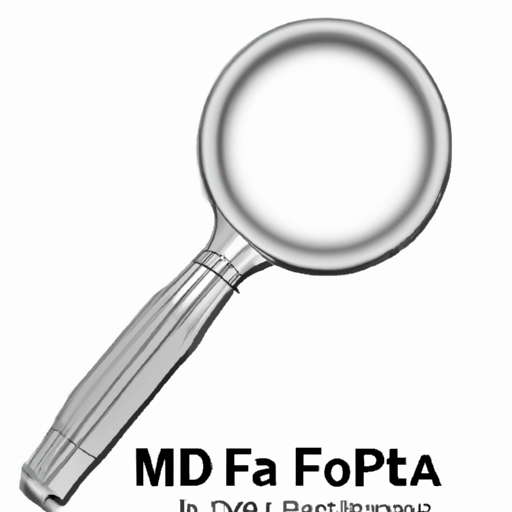In the digital world, metadata plays a crucial role in providing additional information about a file. When it comes to PDFs, understanding and managing the metadata can be valuable in various situations. This article aims to explore the significance of metadata in PDFs, highlighting how it can be edited or removed to ensure privacy, security, and efficient document management. Whether you’re a curious individual looking to expand your knowledge or someone seeking practical solutions, read on to discover the ins and outs of PDF metadata.
Understanding PDF Metadata
What is metadata?
Metadata refers to the additional information or details that are embedded within a PDF document. It provides insights into the document’s creation, modification, and other relevant attributes. Essentially, metadata serves as a digital footprint that helps users understand the history and context of a PDF file.
Importance of metadata in PDFs
Metadata plays a crucial role in PDFs as it enables efficient document management and retrieval. By providing information such as the author, title, and creation date, metadata helps users quickly identify and locate specific files. It also aids in maintaining document consistency and enhances collaboration and organization within a digital workflow.
Types of metadata in PDFs
PDFs can contain various types of metadata, each serving a different purpose. Some common types of metadata found in PDFs include:
-
Document metadata: This includes information such as the document title, author, subject, keywords, and language. It helps users categorize and search for PDFs effectively.
-
Structural metadata: This type of metadata describes the organization and structure of the PDF document. It may include elements like bookmarks, table of contents, and cross-references, making navigation within the file easier.
-
Descriptive metadata: Descriptive metadata provides additional information about the content of the PDF document. It can include abstracts, keywords, or summaries that help users understand the document’s context and relevance.
-
Administrative metadata: Administrative metadata contains details related to document management, such as file size, encryption settings, and version information. It ensures proper document control and security.
Viewing PDF Metadata
Using Adobe Acrobat Reader
Adobe Acrobat Reader is one of the most popular PDF viewers and offers a convenient way to access and view metadata. To view the metadata of a PDF using Adobe Acrobat Reader, simply follow these steps:
- Open the PDF document in Adobe Acrobat Reader.
- Go to “File” and select “Properties.”
- In the Properties dialog box, navigate to the “Description” or “Properties” tab.
- Here, you will find the document metadata, including author, title, subject, and keywords.
Using other PDF viewers
While Adobe Acrobat Reader is commonly used, it is not the only option for viewing PDF metadata. There are several other PDF viewers available, each with its own methods of accessing metadata. Some popular alternatives include Foxit Reader, Nitro PDF Reader, and Google Chrome’s built-in PDF viewer.
To view metadata using other PDF viewers, explore the software’s menu options or help documentation for specific instructions on accessing metadata information.
Editing PDF Metadata
Why editing metadata is necessary
Editing PDF metadata can be necessary for various reasons. It allows users to correct any inaccuracies, update outdated information, or add missing details. This is especially useful when sharing PDFs with others, ensuring that the document’s metadata is accurate and relevant.
Additionally, editing metadata can provide an opportunity to improve searchability and enhance document organization, making it easier to locate files within a large collection.
Using Adobe Acrobat Pro
Adobe Acrobat Pro offers advanced features for editing PDF metadata. To edit metadata using Adobe Acrobat Pro, follow these steps:
- Open the PDF document in Adobe Acrobat Pro.
- Go to “File” and select “Properties.”
- In the Properties dialog box, navigate to the “Description” or “Properties” tab.
- Make the necessary changes to the metadata fields, such as the author, title, or keywords.
- Click “OK” to save the changes.
It is essential to note that Adobe Acrobat Pro is a paid software with a range of additional features beyond metadata editing.
Using third-party software
Apart from Adobe Acrobat Pro, several third-party software options are available for editing PDF metadata. Some popular choices include PDFelement, Nitro Pro, and iSkysoft PDF Editor. These tools provide similar functionality to Adobe Acrobat Pro and often offer a more affordable alternative.
To edit metadata using third-party software, refer to the specific software’s instructions and interface for guidance on accessing and modifying the metadata fields.
Editing metadata manually
Simple metadata changes can also be made manually, without the need for specialized software. This method is suitable for users looking to edit individual metadata fields quickly.
To edit metadata manually:
- Right-click on the PDF document and select “Properties” or “Get Info,” depending on your operating system.
- Locate the metadata fields, such as “Title,” “Author,” or “Keywords.”
- Make the necessary changes to the metadata fields directly.
- Save the changes, and the updated metadata will be associated with the PDF document.
While manual editing can suffice for basic changes, it may not offer the same level of convenience or functionality as dedicated software tools.
Removing PDF Metadata
Reasons to remove metadata
There are several reasons why one may want to remove PDF metadata. Some common reasons include:
-
Privacy concerns: Metadata may contain sensitive information, such as the author’s name or organization. Removing metadata helps protect the privacy of individuals and organizations.
-
File size reduction: Large amounts of embedded metadata can increase the file size of a PDF. Removing unnecessary metadata can help reduce the overall file size, making it easier to store or transmit the document.
-
Collaboration and sharing: When sharing PDFs with others, especially in professional settings, removing metadata can be important to ensure that only relevant information is shared.
Using Adobe Acrobat Pro
Adobe Acrobat Pro offers a straightforward method for removing metadata from PDFs. To remove metadata using Adobe Acrobat Pro, follow these steps:
- Open the PDF document in Adobe Acrobat Pro.
- Go to “File” and select “Properties.”
- In the Properties dialog box, navigate to the “Description” or “Properties” tab.
- Click on the “Remove All” or “Clear All” button to delete all metadata associated with the PDF.
- Click “OK” to save the changes.
Using online tools
Several online tools are available for removing PDF metadata without the need for specialized software installation. These tools often provide a quick and convenient way to remove metadata from PDFs on any device with an internet connection.
To remove metadata using online tools, search for reputable options such as Metadata Anonymization Toolkit (MAT), PDF24, or Smallpdf. These tools typically involve uploading the PDF file and following the instructions provided on the website to process and download the metadata-free file.
Removing metadata manually
For users who prefer manual methods, removing metadata manually is also possible, although it may be more time-consuming. Some metadata fields can be removed by modifying the properties directly from the file explorer or document management system.
To manually remove metadata:
- Right-click on the PDF document and select “Properties” or “Get Info.”
- Locate the metadata fields you want to remove, such as “Author,” “Keywords,” or “Description.”
- Clear or delete the contents of the metadata fields.
- Save the changes made to the file properties.
It is important to note that not all metadata fields may be accessible for deletion through manual methods. In such cases, using software tools or online solutions may be more effective.
Protecting PDF Metadata
Importance of protecting metadata
Protecting PDF metadata is essential for maintaining information privacy and security. Metadata often contains sensitive details that, if exposed, could lead to potential risks, such as identity theft, data breaches, or unauthorized access.
By protecting metadata, users can ensure that information such as authors’ names, organizations, or document properties is not accessible to unintended recipients. This is particularly important in professional or legal settings where confidentiality and privacy are paramount.
Using Adobe Acrobat Pro
Adobe Acrobat Pro offers features to protect PDF metadata effectively. Users can prevent unauthorized access or modification of metadata by setting document restrictions and applying password protection.
To protect PDF metadata using Adobe Acrobat Pro, follow these steps:
- Open the PDF document in Adobe Acrobat Pro.
- Go to “File” and select “Properties.”
- In the Properties dialog box, navigate to the “Security” or “Protection” tab.
- Set document-level restrictions or apply password protection to limit access to metadata and other document elements.
- Save the changes and secure the PDF file.
Using metadata removal tools
In addition to Adobe Acrobat Pro, there are dedicated metadata removal tools available that focus specifically on stripping metadata from PDFs. These tools often offer additional features beyond basic metadata removal, such as batch processing, customizing removal options, or integrating with existing workflows.
Some popular metadata removal tools include ExifTool, MAT (Metadata Anonymization Toolkit), and PdfTool. These tools allow users to remove metadata efficiently and securely, providing an added layer of protection for sensitive information.
Metadata Privacy Concerns
Risks of exposing metadata
Exposing PDF metadata can pose various risks, both in personal and professional contexts. Some potential risks include:
-
Identity theft: Metadata can contain personal information, such as authors’ names or email addresses, that can be exploited by malicious individuals for identity theft or phishing attempts.
-
Unauthorized access: Metadata may reveal the organization or client names, potentially granting unauthorized individuals insight into confidential projects or sensitive business information.
-
Legal implications: Certain types of metadata, such as revision history or authorship details, can have legal implications in cases involving intellectual property, copyright infringement, or contractual disputes.
Protecting sensitive information
To protect sensitive information contained in PDF metadata, consider implementing the following best practices:
-
Be mindful of document creation: When creating PDFs, be cautious about the information you include in metadata fields. Minimize the inclusion of personal or sensitive details unless necessary.
-
Remove or redact metadata: Regularly review and remove or redact metadata before sharing or distributing PDFs, especially in situations where privacy and confidentiality are crucial.
-
Educate and train users: Provide training and awareness programs on metadata best practices to ensure all users understand the potential risks and take necessary precautions when handling PDF documents.
-
Implement metadata scrubbing policies: Establish policies or procedures that require routine metadata scrubbing before documents are released or shared outside of secured systems.
-
Use secure document management systems: Utilize document management systems that automatically remove or sanitize metadata upon file upload or sharing, ensuring metadata is not inadvertently exposed.
By adopting these practices, individuals and organizations can mitigate the risks associated with exposing metadata, safeguarding confidential information, and preserving privacy.
Metadata Best Practices
Improve productivity with accurate metadata
Accurate and well-organized metadata can significantly enhance productivity and efficiency in managing PDF documents. By implementing best practices, users can leverage metadata to improve their document management processes:
-
Consistent naming conventions: Develop and adhere to a consistent naming convention for PDF files that includes relevant metadata elements such as document type, date, and version. This makes it easier to search, sort, and identify files.
-
Document properties standardization: Establish standardized document property fields, such as author, title, and keywords, to ensure consistency across PDF documents. This promotes effective document classification and retrieval.
-
Keywords and tags: Use descriptive keywords and tags that accurately reflect the content of the PDF. This can help users quickly locate specific documents and improve searchability within document repositories.
Regularly update metadata
Metadata should not be a one-time setup; it requires regular updating to remain relevant and useful. As document content and context evolve over time, it is important to review and update metadata accordingly:
-
Revision history: Update metadata fields such as revision dates, authors, or version numbers to accurately reflect the document’s history. This ensures that users can track changes and access the latest version easily.
-
Document title and subject: Review and update the document title and subject as needed to ensure they reflect the document’s purpose or topic accurately. This helps users identify the content at a glance.
-
Keywords and tags: Periodically review and update the keywords and tags applied to PDF documents to align with changes in content or to include additional relevant information that improves discoverability.
Maintaining consistency in metadata
Consistency is key when it comes to metadata, as it optimizes document organization and searchability. To ensure consistent metadata across PDF documents:
-
Establish metadata standards: Develop a set of guidelines or standards for metadata, specifying the structure, format, and allowed values for each field. This ensures uniformity and reduces errors or inconsistencies.
-
Automation and templates: Utilize automation tools or templates that automatically populate default metadata values to maintain consistency, especially for common attributes like author or department.
-
Regular audits and reviews: Conduct periodic audits and reviews of existing metadata to identify and rectify inconsistencies or discrepancies. This helps maintain data integrity and improves overall metadata quality.
By following these best practices, users can harness the full potential of metadata and streamline their document management processes, saving time and improving efficiency.
Metadata in Legal and Professional Settings
Importance of metadata in legal documents
In legal settings, metadata plays a critical role in managing and organizing vast amounts of documents. Metadata in legal documents serves several purposes:
-
Document identification: Metadata assists in uniquely identifying legal documents, ensuring accurate referencing and retrieval during legal proceedings.
-
Track changes and versions: Metadata fields like revision history, authorship, or date modified help track changes made to legal documents over time. This ensures transparency and maintains document integrity.
-
Document categorization: Metadata, particularly document type and subject, aids in classifying legal documents into relevant categories for efficient searching and retrieval.
-
Document authentication: Some metadata attributes, such as digital signatures or timestamps, help establish the authenticity and integrity of legal documents, ensuring their admissibility in court.
Metadata compliance in professional settings
In professional settings like financial institutions or healthcare organizations, adherence to metadata compliance standards is crucial:
-
Regulatory compliance: Metadata fields often contain sensitive information subject to specific regulations, such as those found in financial or healthcare sectors. Compliance mandates may outline requirements for metadata retention, protection, or disclosure.
-
Document retention policies: Professional organizations may establish document retention policies that include metadata requirements. Complying with these policies ensures optimum document management and legal obligations.
-
Information security: Metadata compliance helps maintain data security and privacy by ensuring sensitive information is not exposed unintentionally. This protects organizations and individuals from potential data breaches or non-compliance penalties.
Metadata in intellectual property
Metadata is of utmost importance in safeguarding intellectual property rights. In the context of intellectual property, metadata can provide evidence of originality, authorship, and ownership:
-
Copyright protection: Metadata fields like author, creation date, or copyright notice help establish ownership and date of creation of intellectual property. This plays a vital role in enforcing copyright protection and preventing unauthorized use.
-
Licensing and permissions: Metadata can include licensing information, permissions, or usage restrictions. This enables clear communication of how the intellectual property can be used, offering protection against infringement.
-
Content identification and attribution: Metadata, such as watermarking or embedded codes, helps identify the source or origin of digital content. This supports proper attribution and prevents plagiarism or unauthorized use.
Overall, metadata plays a crucial role in legal and professional settings, aiding in document management, compliance, and protecting intellectual property rights.
Metadata in Ebooks and Research Papers
Role of metadata in ebooks
Metadata plays a vital role in the organization and discoverability of ebooks. In ebook publishing, metadata assists in several ways:
-
Categorization and genre identification: Metadata fields like subject, genre, or audience help classify ebooks into appropriate categories, facilitating browsing and searchability in digital libraries or online platforms.
-
Ebook identification: Metadata provides unique identifiers, such as International Standard Book Number (ISBN), to ensure accurate identification of ebooks. This is especially important for cataloging and sales tracking purposes.
-
Author and publisher details: Metadata fields capture author and publisher information, promoting accurate attribution and recognition. It helps users identify the creators of ebooks and facilitates collaborations.
-
Enhanced searchability: By including relevant keywords, summaries, or descriptions, metadata improves search engine optimization for ebooks. This leads to increased discoverability and improved visibility to potential readers.
Metadata standards for research papers
Metadata plays a crucial role in academic and research settings, aiding in the organization and accessibility of research papers. Some common metadata standards used in this context include:
-
Dublin Core Metadata Initiative (DCMI): DCMI provides a widely accepted metadata standard for research papers and scholarly articles. It includes fields like title, creator, subject, description, and date, among others.
-
CrossRef Metadata Schema: CrossRef is often used in conjunction with DOI (Digital Object Identifier) to provide persistent identifiers for research papers and facilitate citation tracking.
-
JATS (Journal Article Tag Suite): JATS is an XML-based metadata standard specifically designed for scholarly publishing. It supports rich metadata representation, allowing for detailed information about authors, affiliations, references, and other attributes of research papers.
By adhering to these metadata standards, researchers, publishers, and academic institutions can ensure consistency, interoperability, and accessibility of research papers.
Enhancing discoverability with metadata
Metadata plays an integral role in enhancing discoverability in the digital landscape. By incorporating appropriate metadata practices, ebooks and research papers can reach a wider audience:
-
Accurate and relevant keywords: Including keywords that accurately represent the content or topic covered in the ebook or research paper helps potential readers find and access the material more easily.
-
Descriptive summaries: Crafting concise and informative summaries provides a snapshot of the content, helping readers determine if it aligns with their interests or research needs.
-
Clear and concise titles: Titles that accurately reflect the ebook or research paper’s topic or purpose are essential for enabling users to quickly assess its relevance.
-
Tailored metadata for specific platforms: When publishing ebooks or research papers on specific platforms or repositories, it is important to adjust metadata to align with the platform’s requirements or standards. This enhances searchability and ensures the content is displayed accurately.
By optimizing metadata specifically for ebooks and research papers, authors and publishers can improve discoverability, increase readership, and contribute to the overall accessibility of knowledge.
Metadata in Images and Graphics
Understanding metadata in images
Metadata in images refers to the additional information embedded within image files, such as photographs, graphics, or illustrations. Similar to PDFs, image metadata provides valuable insights into the image’s creation, editing, and contextual information.
Common types of metadata found in images include:
-
Exif data: Exchangeable Image File Format (Exif) data includes details about the camera or device used to capture the image, settings, date, time, and GPS coordinates. It can also capture information about image attributes like resolution, exposure, and focal length.
-
IPTC metadata: International Press Telecommunications Council (IPTC) metadata includes descriptive information like captions, copyright information, keywords, and licensing details. It aims to provide comprehensive details about the image and its usage.
-
XMP data: Extensible Metadata Platform (XMP) is a metadata framework developed by Adobe Systems. It allows for the inclusion of custom metadata fields that may not be supported by other formats. XMP can contain information related to image editing, workflow, or copyright.
Metadata in digital photography
In digital photography, metadata serves numerous purposes and benefits both photographers and viewers:
-
Image organization and searchability: Metadata enables photographers to organize, sort, and search for images based on various attributes. By including descriptive metadata like keywords or tags, photographers can quickly locate specific images in their digital libraries.
-
Copyright protection: Metadata can include copyright information, ensuring that photographers receive proper attribution and legal protection for their work. It serves as evidence of ownership and can deter unauthorized use or plagiarism.
-
Workflow and editing information: Metadata can capture details about editing software, editing history, or enhancements applied to the image. This information is valuable for photographers who wish to revisit or replicate their editing process in the future.
-
Preservation and provenance: Metadata provides important provenance information for images, including the original source, date of capture, and any subsequent modifications. This helps maintain an image’s historical accuracy and establishes its authenticity.
-
Image discovery and presentation: Including descriptive metadata and keywords enhances the discoverability of images by search engines and image databases. This means that the images can reach a wider audience and be found more easily by viewers.
By leveraging metadata in digital photography, photographers can better manage their image collections, protect their work, and enhance the overall viewer experience.
Using metadata for copyright protection
Metadata plays a crucial role in copyright protection for images and graphics. By including relevant metadata, photographers and content creators can establish ownership and protect their intellectual property:
-
Author information: Including the name or pseudonym of the author or copyright holder in the metadata establishes the creator’s identity, enabling proper attribution and preventing unauthorized use.
-
Copyright notices: Metadata fields can contain copyright notices, indicating the copyright status of the image and any usage rights. This serves as a clear indication of the creator’s intention and provides legal protection.
-
Licensing information: Metadata can include details about the licensing permissions or restrictions associated with the image. This ensures that users understand and adhere to the terms of use, preventing copyright infringement.
-
Digital watermarking: Some metadata solutions offer the ability to embed digital watermarks within the image itself, containing metadata that identifies the copyright holder and the terms of use. These watermarks discourage unauthorized use and can strengthen legal claims.
By utilizing metadata for copyright protection, photographers and content creators can assert their rights, deter infringement, and control the usage of their images, promoting fair and ethical practices.
In conclusion, understanding PDF metadata is crucial for effective document management and collaboration. Viewing PDF metadata can be done through various PDF viewers, and editing metadata can be achieved using Adobe Acrobat Pro or third-party software. Removing metadata is important to protect privacy and reduce file size, and protection of metadata safeguards sensitive information. Best practices include using accurate metadata, updating regularly, and maintaining consistency. Metadata has significance in legal, professional, ebook, research paper, and image contexts, aiding in organization, discovery, and protection. By understanding and utilizing metadata effectively, individuals and organizations can optimize their document workflows and maximize the benefits of their digital assets.



